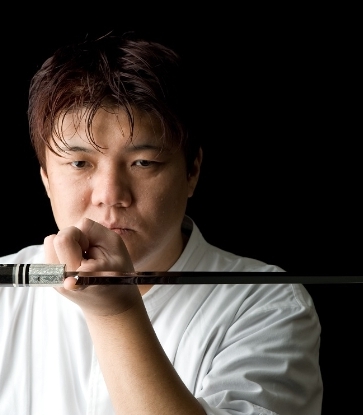Despite having an international culinary team and Japanese and French influences thoughtfully woven into its menu, Restaurant Zén retains its Swedish roots at heart. The modern Nordic fine-dining restaurant is a sister restaurant of three-Michelin-starred Frantzén in Stockholm, which is helmed by chef Björn Frantzen. Nordic touches are imbued throughout the restaurant, from its ingredients to interiors.
One just needs to look at the feature walls that display showcase jars of fermented and pickled ingredients from sea buckthorn, asparagus, pine cones to lingonberries that are liberally used across the menu — in sauces and garnishes. There are also unique produce such as vendace roe from Kalix in Northern Sweden and house-salted caviar that has been aged for six months.
Alluding to the Swedish tradition of “fika”, or enjoying coffee and cake with friends, Swedish-inspired desserts are served at the eclectically-adorned lounge on the third level of the shophouse restaurant. They include Toast Meringue, Brown Cheese with Arctic Raspberries, which is fashioned after the Hallongrotta, or jam cookies, or Sea Buckthorn Jello and Roasted Clover Sugar that resembles gelehallon (Swedish gum drops).

Swedish sous chef Lars Brennwald notes that Nordic cooking has evolved over the past decade, with the focus moving from preserved and cured food to vegetable and fish-driven, using modern techniques to elevate flavours.
Farmer and Brennwald share more about three Swedish cooking techniques that are peppered in Restaurant Zén’s Spring menu.

1. Beer Poaching
No summer in Sweden is complete without Kräftskiva, a tradition of throwing convivial outdoor crayfish parties complete with colourful paper lanterns hung around the dining table and people donning bibs and comical paper hats. According to Brennwald, the crayfish can be cooked in huge pots of beer, dill, fennel and caraway, and washed down with more beer and Schnapps.
At Restaurant Zén, this classic dish has been refined into a canape. Farmer poaches Alaskan King Crab meat in a light lager (yes, Restaurant Zén uses Tiger Beer) and aromatics, before shredding it into thin ribbons. They are then placed on a tartlet and garnished with wild trout roe and dill. He says: “Crustaceans such as crayfish and crab tend to have a light and sweet flavour, and beer adds a depth of flavour and a hint of bitterness.”
RELATED: What To Expect From A $450 Meal At Bjorn Frantzén’s Restaurant Zén In Singapore

The Swedes have a long tradition for fermenting and curing food to extend its shelf life during the long barren winter months. More than 15 ingredients, from lingonberries and sea buckthorn to Vendace and trout roe are preserved in salt, oil and syrups at the restaurant. For example, the white asparagus is juiced and then fermented before being used in a beurre blanc sauce with an acidic touch. Ramson capers, which appear at the end of the wild garlic season, are seasoned with salt before being preserved in vinegar. Pine shoots and corn are also pickled in sugar syrup till they are tender. The restaurant’s osetra caviar is aged for six months in tins for a richer and deeper flavour.

3. Cooking With Dairy Products
Swedish cuisine is known for its heavy use of dairy products such as milk, creme fraiche and cream. One such popular dish is risgrynsgröt (rice porridge), which is eaten throughout the year, especially during julbord (Christmas buffet). The short-grained rice is cooked with milk and cinnamon till it yields a pudding-like texture. Another dish is macaroni stewed with milk and served with sausages and meatballs.
Farmer continues this tradition with the dish of Kinmedai, Koshihikari Rice, Uni, White Asparagus juice (right). Drawing inspiration from sushi, a slab of kinmedai is topped on a mound of Koshihikari rice cooked in house-made walnut milk. The milk adds richness and fat to the rice. Farmer says: “The idea is to add nuttiness to the rice, which is reminiscent of brown rice.” The garnishes — sprouted walnuts, umami-rich roasted chicken fat, fresh uni and ponzu — meld Japanese and Nordic influences.


















